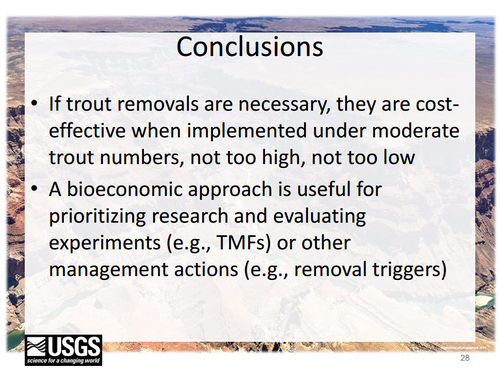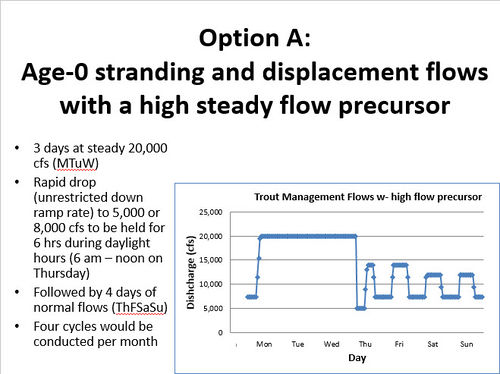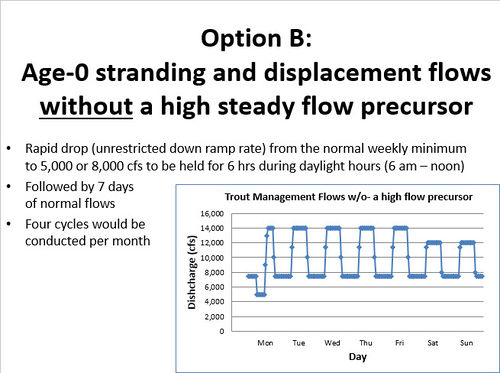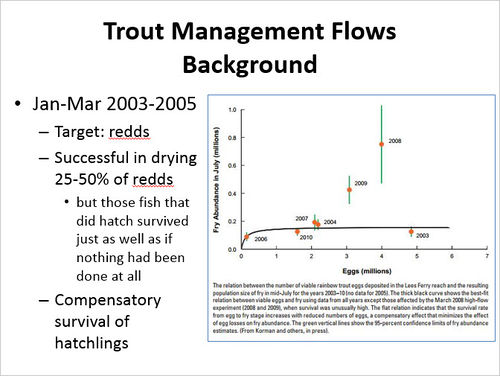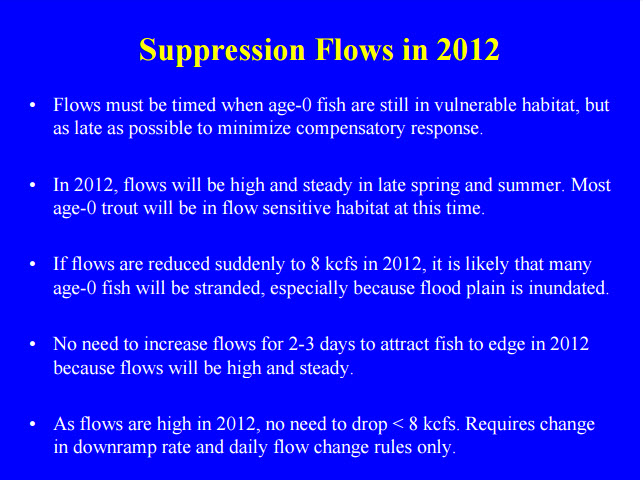Difference between revisions of "Trout Management Flows"
Cellsworth (Talk | contribs) |
Cellsworth (Talk | contribs) |
||
| Line 38: | Line 38: | ||
----------Strapline immediately below banner----------> | ----------Strapline immediately below banner----------> | ||
{| style="width:100%; height:50px" border=1px solid #ccc; background:#cedff2 | {| style="width:100%; height:50px" border=1px solid #ccc; background:#cedff2 | ||
| − | ! style="width=50%; background:#cedff2;" | | + | ! style="width=50%; background:#cedff2;" | [http://www.azgfd.gov/h_f/fish_rainbow_trout.shtml Rainbow Trout] |
| − | ! style="width=50%; background:#cedff2;" | | + | ! style="width=50%; background:#cedff2;" | [http://www.azgfd.gov/h_f/fish_brown_trout.shtml Brown Trout] |
|} | |} | ||
Revision as of 17:13, 8 December 2017
|
|
The purpose of implementing Trout Management Flows (TMFs) is to evaluate methods for using releases from Glen Canyon Dam to reduce the production of large numbers of age-0 rainbow trout in order to improve the quality of the Lees Ferry trout fishery and conserve the endangered humpback chub and other native fishes in Grand Canyon. Three objectives were identified for Trout Management Flows:
TMFs could occur from May to August. |
| Rainbow Trout | Brown Trout |
|---|
|
|

